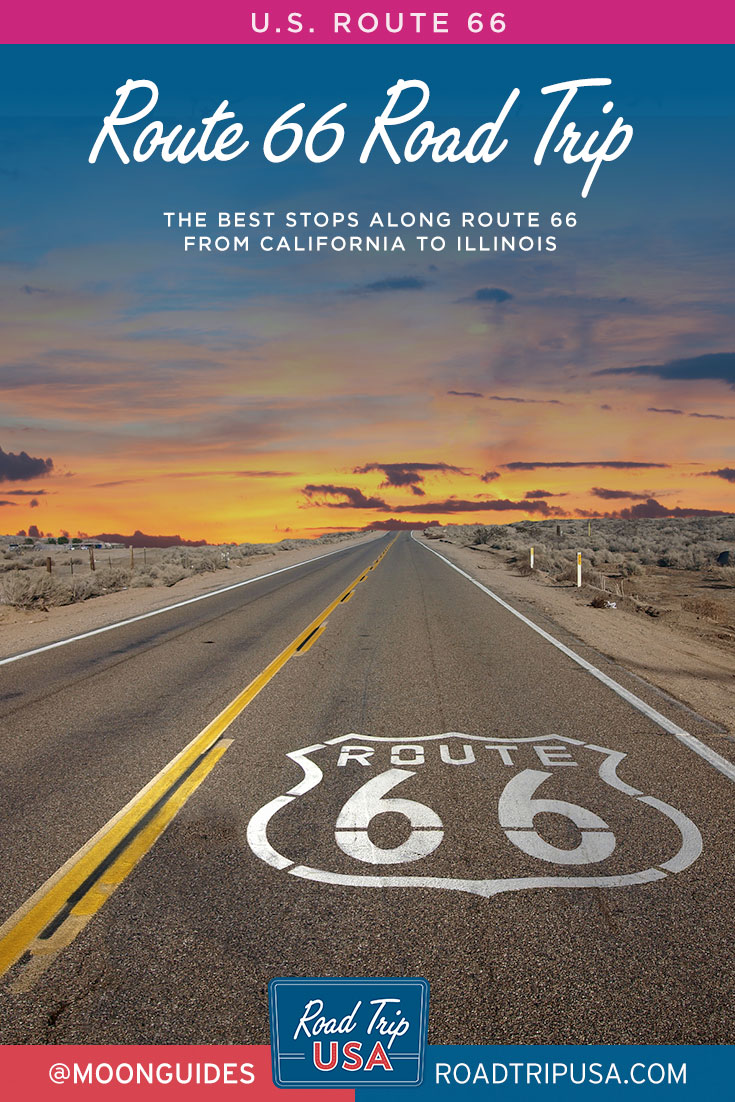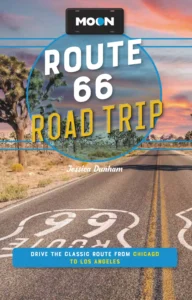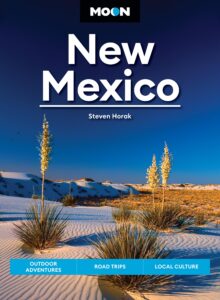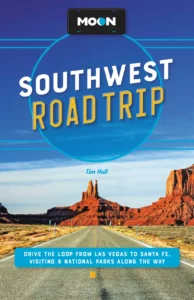Route 66
Driving Historic Route 66
The romance of Route 66 continues to captivate people around the world. Starting in Chicago and ending in Los Angeles, “over two thousand miles all the way” in the words of the popular R&B anthem, this legendary old road passes through the heart of the United States on a diagonal trip that takes in some of the country’s most archetypal roadside scenes. If you’re looking for great displays of neon signs, rusty middle-of-nowhere truck stops, or kitschy Americana, do as the song says and “get your kicks on Route 66.”
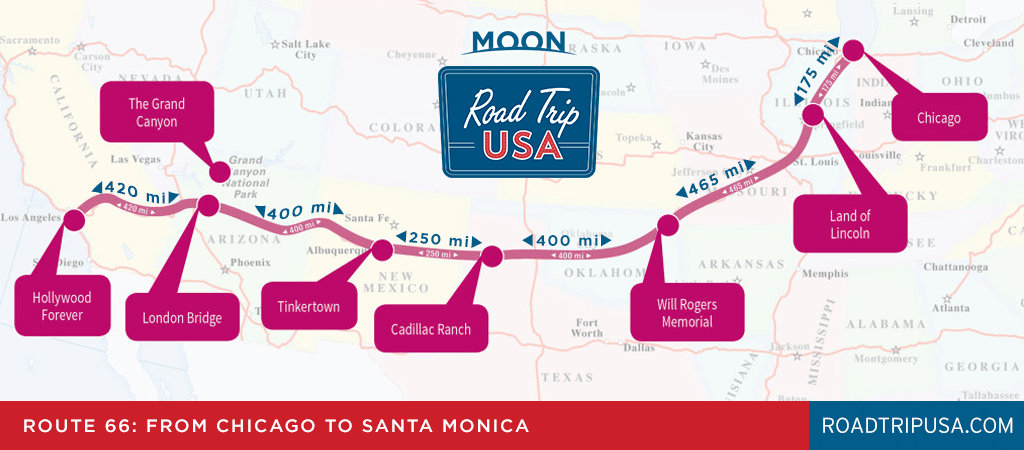
Related Travel Guides
History of Route 66
Perhaps the most compelling reason to follow Route 66 is to experience the road’s ingrained timeline of contemporary America. Before it was called Route 66, and long before it was even paved in 1926, this corridor was traversed by the National Old Trails Highway, one of the country’s first transcontinental highways. For three decades before and after World War II, Route 66 earned the title “Main Street of America” because it wound through small towns across the Midwest and Southwest, lined by hundreds of cafés, motels, gas stations, and tourist attractions.
During the Great Depression, hundreds of thousands of farm families, displaced from the Dust Bowl, made their way west along Route 66 to California, following what John Steinbeck called “The Mother Road” in his vivid portrait, The Grapes of Wrath. After World War II, many thousands more expressed their upward mobility by leaving the industrial East, bound for good jobs in the suburban idyll of Southern California—again following Route 66, which came to embody the demographic shift from the Rust Belt to the Sun Belt.
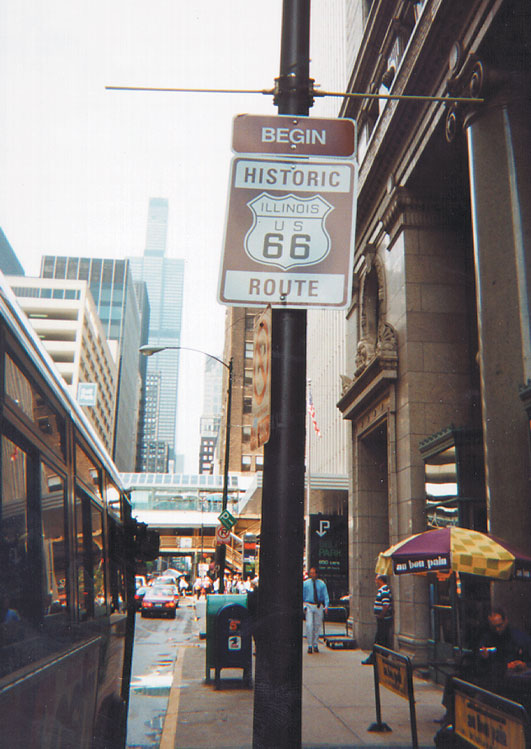
Beginning in the late 1950s and continuing gradually over the next 25 years, old Route 66 was bypassed section by section as the high-speed Interstate highways were completed. Finally, after the last stretch of freeway was completed in 1984, Route 66 was officially decommissioned. The old route is now designated Historic Route 66.
Though it is no longer a main route across the country, Route 66 has retained its mystique in part due to the very same effective hype, hucksterism, and boosterism that animated it through its half-century heyday. It was a Route 66 sight, the marvelous Meramec Caverns, that gave the world the bumper sticker. And it was here on Route 66 that the great American driving vacation first flourished. Billboards and giant statues along the highway still hawk a baffling array of roadside attractions, tempting passing travelers to view giant blue whales, to see live rattlesnakes and other wild creatures on display in roadside menageries, or to stay at “Tucumcari Tonite.”
The same commercial know-how and shameless self-promotion has helped the towns along the old route stay alive. Diners and motels play up their Route 66 connections, and many bona fide Route 66 landmarks are kept in business by nostalgic travelers intent on experiencing a taste of this endlessly endangered American experience. That said, many quirky old motels and cafés hang on by a thread of hope, sit vacant, or survive in memory only—all for want of an Interstate exit. In fact, of all the roads covered in this book, Route 66 has perhaps felt the greatest impact from the modern Interstate world; for many stretches you’ll be forced to leave the old two-lane and follow the super slabs that have been built right on top of the old road.
Route 66 passes through a marvelous cross-section of American scenes, from the cornfields of Illinois all the way to the golden sands and sunshine of Los Angeles, passing by such diverse environs as the Grand Canyon, the Native American communities of the desert Southwest, the small-town Midwest heartlands of Oklahoma and the Ozarks, and the city streets of St. Louis and Chicago. Whether you are motivated by an interest in history, feel a nostalgic yearning for the “good old days” Route 66 has come to represent, or simply want to experience firsthand the amazing diversity of people and landscapes that line its path, Route 66 offers an unforgettable journey into America, then and now.
Top 10 Cities and Stops Along Route 66
For more insight into each stop along the route, our content is arranged by state. Here are some major cities and attractions along Route 66 that travelers aiming to follow only a section of the full cross-country route may wish to use to plan their drive:
- Chicago, Illinois – The official beginning of Route 66 (we suggest kicking off from the Art Institute of Chicago)
- St. Louis, Missouri – If you start or stop in St. Louis, swing by Ted Drewes Frozen Custard Stand
- Tulsa, Oklahoma – A bustling big city that doesn’t make a song-and-dance out of its many treasures
- Oklahoma City, Oklahoma – A “mighty pretty” city that has long been one of the primary stops along the Mother Road
- Amarillo, Texas – Not the biggest city along Route 66, but it is where you can order a massive 72-ounce steak
- Albuquerque, New Mexico – A great starting point for travelers mainly interested in the southwest section of Route 66
- Santa Fe, New Mexico – A cultural crossroads that has been at the center of Southwest life for centuries
- Flagstaff, Arizona – An enjoyable, energetic college town high on the Colorado Plateau
- Sedona, Arizona – A New Age draw amidst an otherworldly landscape
- Santa Monica, California – Technically more beach town than big city, Santa Monica is the western end of Route 66
Pin it for Later
